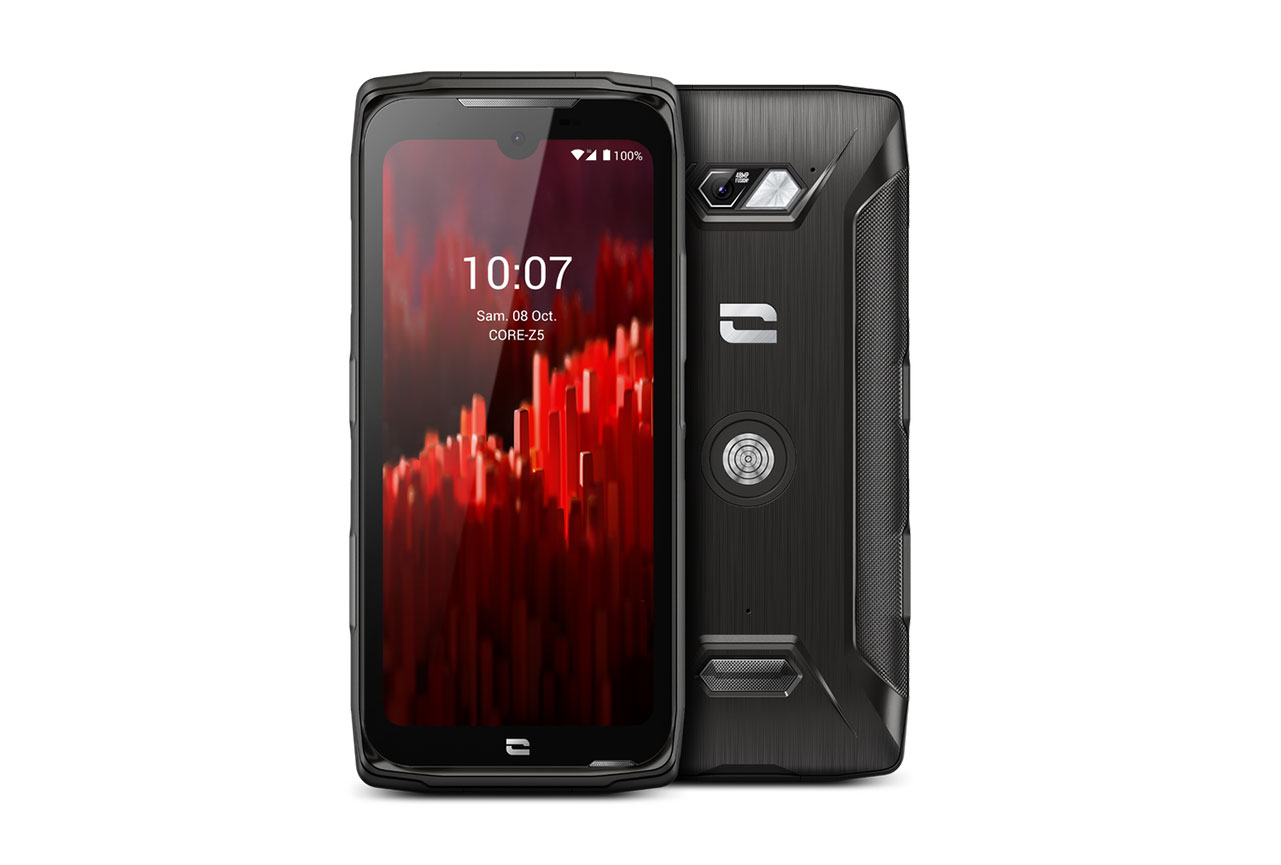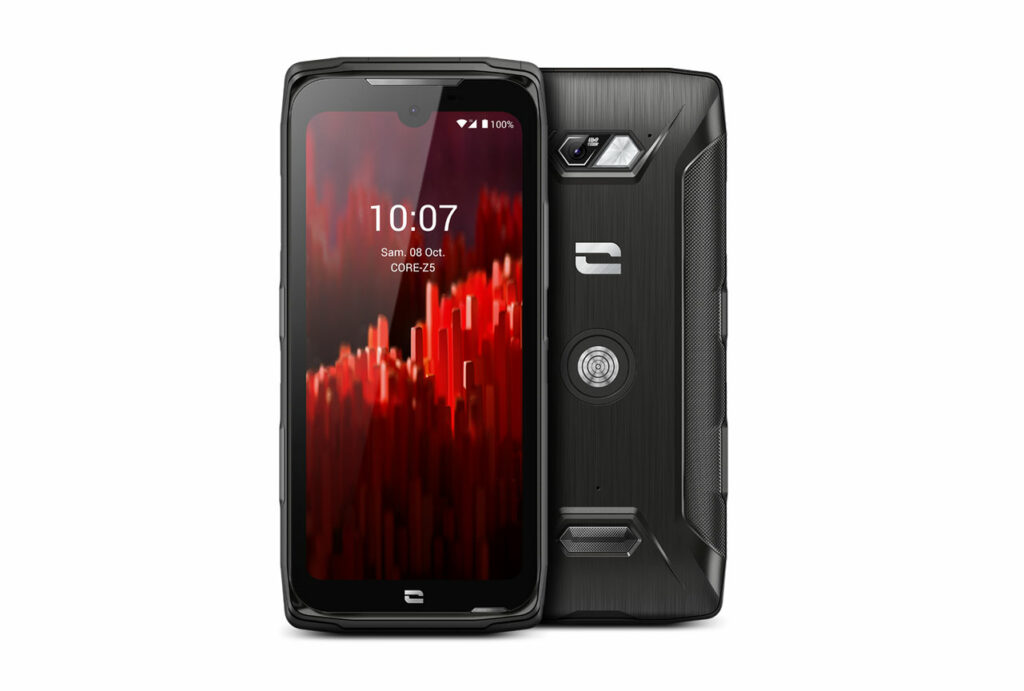We put the Crosscall Core-Z5 through our rigorous DXOMARK Camera test suite to measure its performance in photo, video, and zoom quality from an end-user perspective. This article breaks down how the device fared in a variety of tests and several common use cases and is intended to highlight the most important results of our testing with an extract of the captured data.
Overview
Key camera specifications:
- Primary:48MP, PDAF autofocus
Scoring
Sub-scores and attributes included in the calculations of the global score.

Crosscall Core-Z5


Use cases & Conditions
Use case scores indicate the product performance in specific situations. They are not included in the overall score calculations.
Outdoor
Photos & videos shot in bright light conditions (≥1000 lux)
Indoor
Photos & videos shot in good lighting conditions (≥100lux)
Lowlight
Photos & videos shot in low lighting conditions (<100 lux)
Friends & Family
Portrait and group photo & videos
Pros
- Generally accurate white balance in outdoor and indoor conditions
- Accurate target exposure in outdoor and indoor conditions
- Correct level of texture in most tested conditions
Cons
- Unreliable and very unstable autofocus in all tested conditions
- Lack of stabilization, with strong residual motion visible in all conditions
- Exposure instabilities in all tested conditions
- Very visible noise in low-light conditions
The Crosscall Core-Z5 smartphone from the French maker of durable phones is primarily intended for users who need devices that are resistant to shocks and drops and that can perform in extreme conditions.The Core-Z5 is also the brand’s first 5G phone, and it finds itself in our premium price segment ($600 to $799).
When it comes to image quality from the single rear camera, however, the Core-Z5 still has far to go before it can compete with other phones in this segment. The camera, in general, is capable of capturing basic correct images in standard outdoor conditions, where the device is most likely to be used. In our testing, the Core-X5’s photos and videos turned out better than those taken with the Action-X5, a Crosscall model we evaluated previously, but the Core-Z5’s image quality was severely limited because of the lack of an ultra-wide camera module, which affected the device’s zoom and overall score. The lack of a tele module on the Core-Z5, a feature that is commonly found on devices in this price range, also hindered the device’s camera performance.
Test summary
About DXOMARK Camera tests: DXOMARK’s Camera evaluations take place in laboratories and in real-world situations using a wide variety of subjects. The scores rely on objective tests for which the results are calculated directly by measurement software on our laboratory setups, and on perceptual tests in which a sophisticated set of metrics allow a panel of image experts to compare aspects of image quality that require human judgment. Testing a smartphone involves a team of engineers and technicians for about a week. Photo, Zoom, and Video quality are scored separately and then combined into an Overall score for comparison among the cameras in different devices. For more information about the DXOMARK Camera protocol, click here. More details on smartphone camera scores are available here. The following section gathers key elements of DXOMARK’s exhaustive tests and analyses. Full performance evaluations are available upon request. Please contact us on how to receive a full report.
Photo
Crosscall Core-Z5
169
For scoring and analysis, DXOMARK engineers capture and evaluate more than 2,600 test images both in controlled lab environments and in outdoor, indoor and low-light natural scenes, using the camera’s default settings. The photo protocol is designed to take into account the main use cases and is based on typical shooting scenarios, such as portraits, family, and landscape photography. The evaluation is performed by visually inspecting images against a reference of natural scenes, and by running objective measurements on images of charts captured in the lab under different lighting conditions from 1 to 1,000+ lux and color temperatures from 2,300K to 6,500K.

Zoom
Crosscall Core-Z5
169
DXOMARK engineers capture and evaluate over 400 test images in controlled lab environments and in outdoor, indoor, and low-light natural scenes, using the camera’s default settings and pinch zoom at various zoom factors from ultra wide to very long-range zoom. The evaluation is performed by visually inspecting the images against a reference of natural scenes, and by running objective measurements of chart mages captured in the lab under different conditions from 20 to 1000 lux and color temperatures from 2300K to 6500K.
Video
Crosscall Core-Z5
159
DXOMARK engineers capture and evaluate more than 2.5 hours of video in controlled lab environments and in natural low-light, indoor and outdoor scenes, using the camera’s default settings. The evaluation consists of visually inspecting natural videos taken in various conditions and running objective measurements on videos of charts recorded in the lab under different conditions from 1 to 1000+ lux and color temperatures from 2,300K to 6,500K.



DXOMARK encourages its readers to share comments on the articles. To read or post comments, Disqus cookies are required. Change your Cookies Preferences and read more about our Comment Policy.